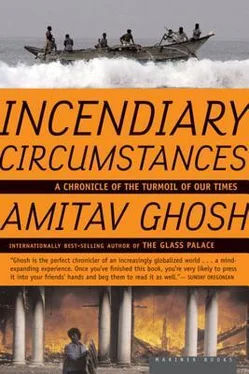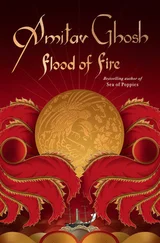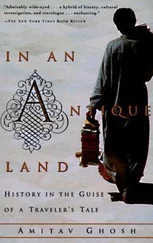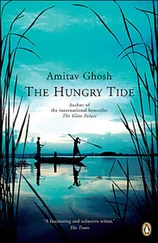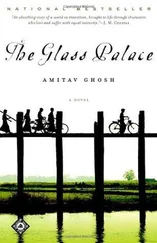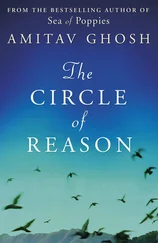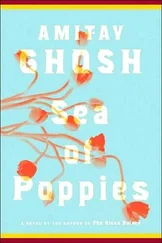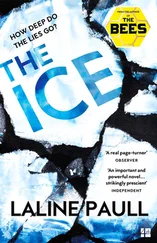As is well known, the book caused an uproar when it was published in Bangladesh in 1993. It also became an instant bestseller on both sides of the border: that is, in Bangladesh as well as in the Bengali-speaking parts of India. A few months after its publication, the government of Bangladesh, in response to the demands of religious extremists, declared a ban on the book and had it removed from circulation. Shortly thereafter, an extremist Muslim leader declared Taslima Nasrin an apostate and issued a death warrant against her. The warrant carried a large bounty. A few months later, in response to certain remarks Taslima Nasrin was alleged to have made in a newspaper interview in Calcutta, the government of Bangladesh charged her officially with the crime of offending religious sentiments and began criminal proceedings. Taslima Nasrin then went into hiding for a period of two months. Thanks to the international outcry that followed, she was allowed to leave Bangladesh in August 1994. She is currently living in Sweden. In her short career in exile she has continued to rock governments. Last October the French foreign ministry refused her a visa, a gesture that created such an outburst of public indignation that the ministry was soon forced to reverse its decision. What I have sketched here is perhaps only the beginning of Taslima Nasrin's story. Even as I write, a government prosecutor in Bangladesh is appearing before a court to demand that she be sentenced in absentia for the crime of blasphemy.
However, religious extremists were not the only people in Bangladesh who objected to Lojja when it first appeared. Many nonsectarian, liberal voices were also fiercely critical of the book. Their objections were important ones and must be taken into account, because — and I cannot repeat this strongly enough — non-sectarian, broadly secularist voices do not by any means represent a weak or isolated strand of opinion in that country. Bangladeshi culture in particular, like Bengali culture in general, has a long and very powerful tradition of secularist thought; Taslima Nasrin is herself a product of this tradition. For all their visibility, the religious extremists represent a tiny minority of the population of Bangladesh. At present, for example, they control no more than 2 percent of the country's legislature.
Of the criticisms directed at Lojja by liberal, nonsectarian Bangladeshis and Indians, perhaps the most important is the charge that the novel, by limiting its focus to Bangladesh, profoundly distorts the context of the violence it depicts. Taken literally, this is, I think, true. By concentrating on the events in Dhaka, the book does indeed, by omission, distort the setting and causes of those events.
What, then, was this context? I shall try to sketch the chain of events as I see them, very briefly.
On December 6, 1992, several thousand Hindu supremacists tore down a four-hundred-year-old mosque in Ayodhya, claiming that the structure was built upon the birthplace of their mythical hero Sri Rama. The Indian government, despite ample warning, was culpably negligent in not taking action to prevent the demolition. Thus, through CNN, the whole world witnessed the destructive frenzy of a mob of Hindu fanatics attacking an archaeological site, in the service of an utter delusion. (After all, a legendary world-bestriding hero can only be diminished if his birthplace comes to be confined to a circumscribed geographical location.)
The destruction of the mosque was followed by tension and general unrest, in Pakistan and Bangladesh as well as India. In India this quickly escalated into violence directed against Muslims by well-organized mobs of Hindus. Riots broke out in several major cities, and within two days four hundred people had died. The overwhelming majority of the dead, as always in these situations in India, were Muslim. There is evidence that in many parts of the country the police cooperated with and even directed Hindu mobs. Within six days, according to the official reckoning, about twelve hundred people had died. Reports from all over the country attest to the unprecedented brutality, the unspeakable savagery, of the violence that was directed against innocent Muslims by Hindu supremacists. A month later, there was a second wave of anti-Muslim violence centered primarily in Bombay and Surat. The violence now assumed the aspect of systematic pogroms, with crowds hunting out Muslims from door to door in particular neighborhoods. I quote here a report from Surat, written by a Dutch observer:
In a refugee camp which I visited a small boy, hardly six years of age, sits all alone in a corner staring in front of him. Before his eyes he has seen first his father and mother murdered by the mob, then his grandfather and grandmother, and in the end three of his brothers. He is still alive but bodily not unscathed with 16 stitches in his head and burns on his back. The men who did it thought he was dead when they had finished with him… Page after page of my diary is filled with this sort of atrocity. Women between seven and 70 were up for grabs by male gangs roaming around the local-ities… People were also thrown into the flames and roasted alive. A high-ranking official told me how he had seen furniture coming down over the balcony from the opposite multistoreyed apartment building: mattresses, chairs, and then to his horror small children as well.
Such was the nature of the horror that visited India in the winter of 1992, in the name of religion.
In Bangladesh and Pakistan, the destruction of the Ayodhya mosque also led to violence. Temples were attacked and destroyed in both countries. In Bangladesh, which has a substantial Hindu population, a great many Hindu shrines were destroyed and desecrated; Hindu-owned businesses were attacked and looted; many Hindu families were driven from their homes. Yet it must also be noted that despite all that happened in Bangladesh, there was no actual loss of life, so far as I know. If accounts could be kept of such events, it would have to be said that the scale of violence in Bangladesh was small compared to what occurred in India.
But here we have to ask whether events such as these can be weighed at all on a scale of comparative horrors. For a minority family that is being harassed in Dhaka (or wherever), the horror of the situation is not mitigated by the knowledge that they are situated in the wings of the stage of violence, as it were, that far worse crimes are being visited upon minority groups in India. Equally, the terror of a middle-class Muslim family caught in a riot in Bombay is in no way lessened by the knowledge that there is greater violence still in Bosnia. To the Bosnian Serbs, in turn, the accounting of violence stretches back to the fourteenth century. To tinker with this calculus is really to enter into what I have called the logic of competitive victimhood: a discourse that ultimately serves only to fuel supremacism.
In inadvertently spotlighting events that were happening in the wings rather than at center stage, Lojja inevitably presents a partial view. As it happened, Hindu supremacists in India seized upon Lojja with undisguised glee. Pirated editions were quickly printed, and the book was even distributed free by Hindu activists in an attempt to whip up anti-Muslim feeling. This in turn led to accusations that Taslima Nasrin was a willing dupe of Hindu supremacists in India, that she was in the pay of a Calcutta publishing house, and so on.
In fact, Lojja is unequivocal in its condemnation of Hindu supremacists. It simply does not give them as much space as it does their Muslim counterparts in Bangladesh, which is unavoidable given the book's setting. Just as important, Taslima Nasrin can hardly be held responsible for the uses to which her book is put. In passing into the public domain, a book also passes beyond its author's control. I know of no way that an author can protect his or her text against abuse of this kind. The only option really is not to write about such matters at all.
Читать дальше
